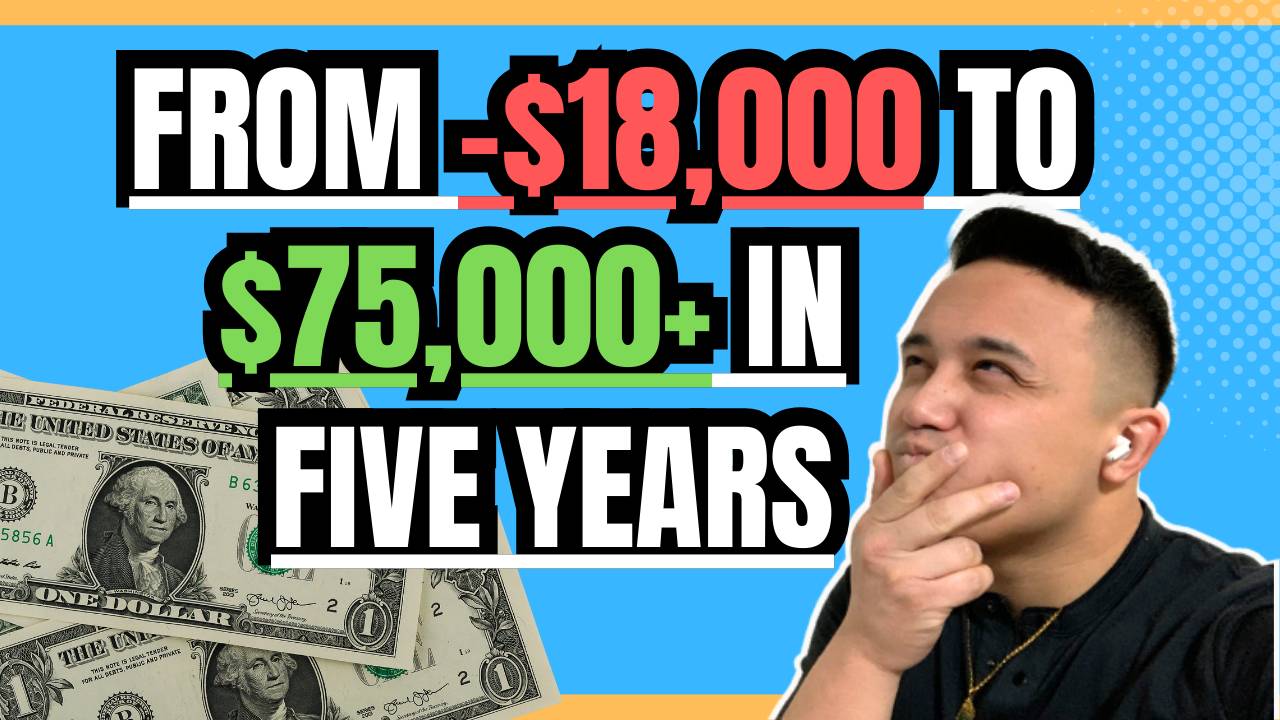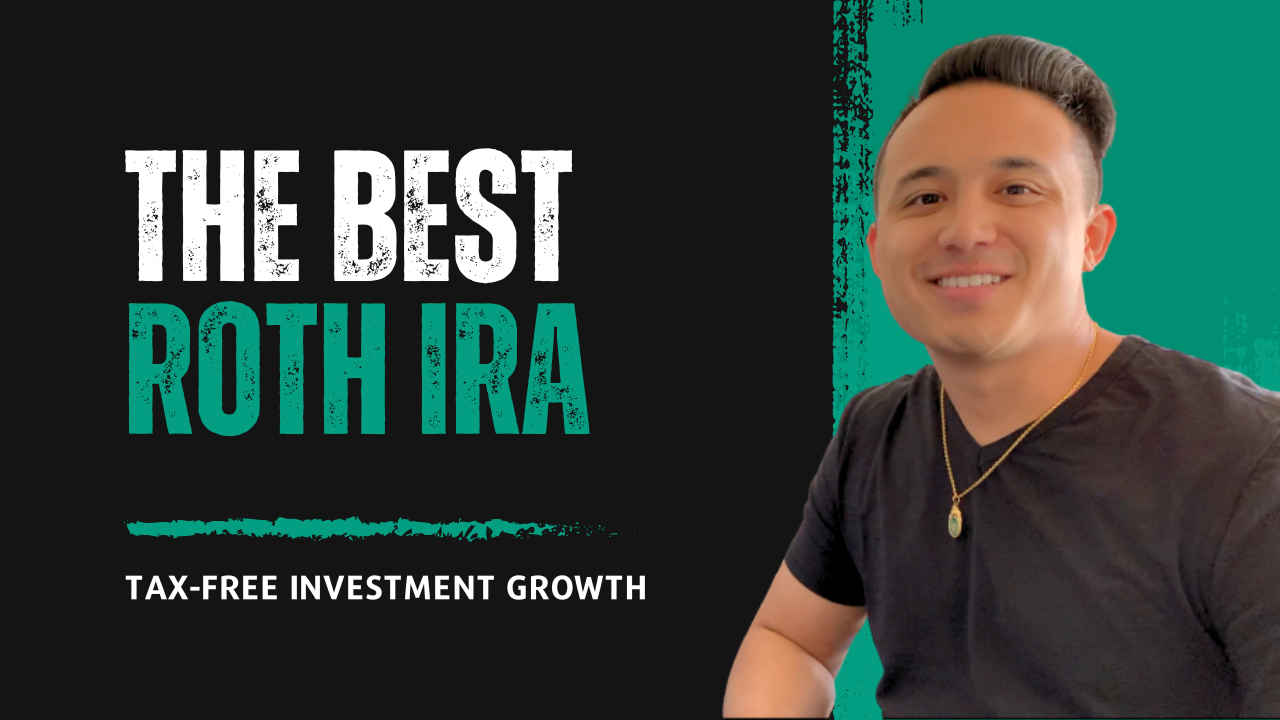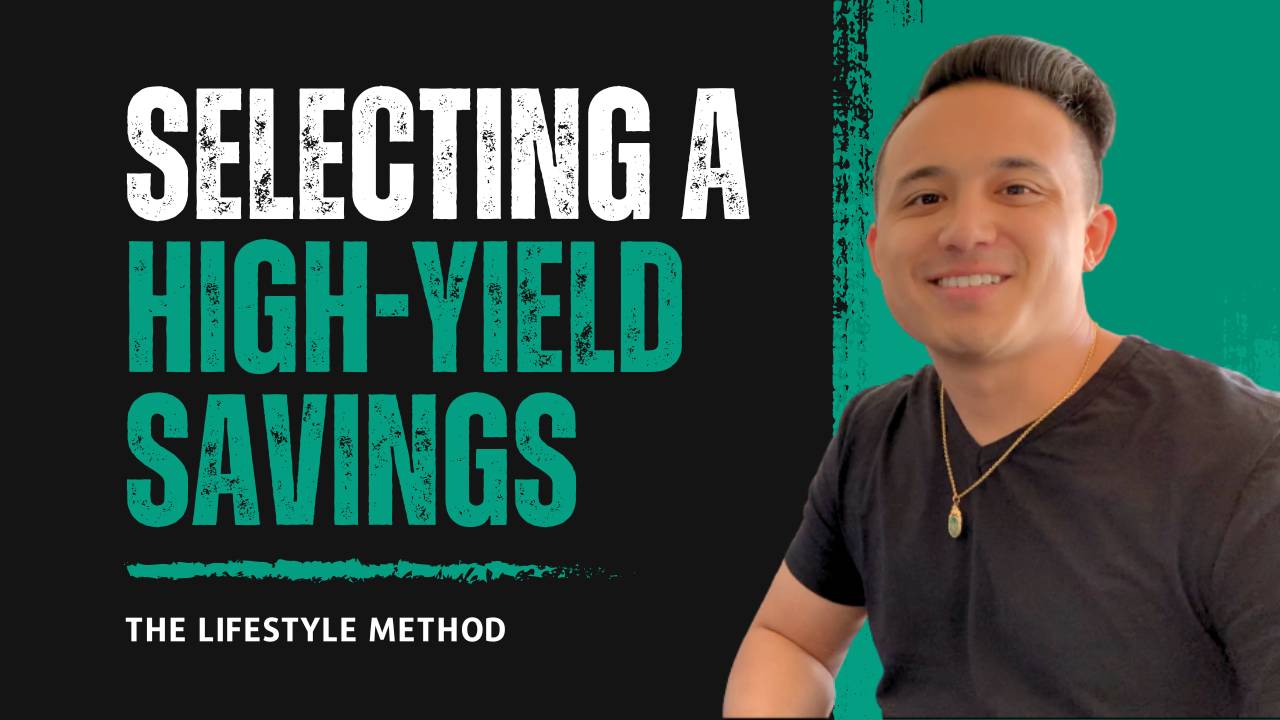How to Make a Budget: Getting Out of Student Loan Debt From -$18,000 to $75,000+ in Five Years
The ultimate beginner's guide to creating a budget. I used this framework to go from -$18,000 in student loans to debt-free in 13 months.

Read time: 15 minutes
If you are tired of looking at your student loan debt with a balance that fails to be getting any smaller, then you’ve come to the right place.
This beginner’s guide isn’t going to talk about how to pay your minimum payments for the next 30 years…
…but will lead you down the path to developing a plan that you can execute to eliminate your student loans and any other debts along the way.
With 69% of graduating seniors with a four-year degree having an average of $29,900 in student loan debt, you are not alone in trying to figure this out.
I created this blog to break the social stigma that prevents us from talking about personal finances.
My goal is to create a place where we can openly share the knowledge that we’ve learned so that together we can take back control of our personal finances.
Why should you follow my advice on how to create a budget?
- I used this framework to go from -$18,000 in student loans to debt-free in 13 months
- This process has been perfected for over 6 years through multiple iterations
- The tips in this beginner’s guide have helped 100s of friends, family, and colleagues kickstart their financial foundation
- My journey to befriend my personal finances has been one of trial and error. I want you to avoid the mistakes that I’ve made so that you can find success faster
This ultimate beginner’s guide to creating a budget will cover how to choose a budget framework, understand your income, identify your fixed and variable expenses, prioritize your debts, implement a habit-improving system, and determine a timeline to when you’ll be debt-free - and on your way to saving!
WARNING: Yes, you will need to invest your time upfront to get things in order, but I can assure you that once you complete this beginner’s guide, it’ll feel like your personal finances will be on autopilot.
I spend no more than 1 hour per month to readjust my personal finances now that I have a system in place.
Video Resources
For additional context and visual explanations, check out these supporting videos:
Watch on YouTube for more context and discussion
Watch on YouTube for more context and discussion
Watch on YouTube for more context and discussion
How to Create a Budget in 5 Simple Steps
Before we dive into this step-by-step beginner’s guide on how to create a budget, let’s cover a few basic things.
Why are you creating a budget?
First, you need to know your why.
Creating a budget may seem like just another task to check off on your personal finance journey, however, there is so much more to consider.
Simply creating a budget will be useless if you aren’t designing the budget to meet your goals.
“I want to create a budget to pay off my loans”
This is a great first step toward defining a goal…
…however, there are some other things to consider:
- By what date do you want to pay off your loans?
- Do you want to create an emergency fund or savings in the process?
- Are you saving towards a passion or hobby like traveling or rock climbing?
Focusing to pay off debt at all costs is an admirable ambition, but that goal might take a number of years.
To sacrifice everything might become hard when you aren’t seeing mini-wins along the way.
Remember: It is a marathon, not a race.
Incorporating things that you are passionate about into your budgeting journey will keep you motivated.
(Because, hey, who doesn’t like to treat themselves for their hard work every once in a while?)
My Mistake: The Reduce-Debt-At-All-Cost Budget
My journey to debt-free was 13 months from the time that I graduated from University.
My mistake was that I eliminated everything from my budget.
My allocated budget for food was enough to eat a hearty amount of Top Ramen.
My accommodations budget was free while I lived on a couch for 6 months…
…and then moved into a shared room so that I could cut any extra accommodation cost.
No shopping budget.
No travel budget.
The hardest part of trying to manage an extremely minimal budget was social pressure.
At the time I was making a $60,000 salary, which was more money than I probably had ever seen, and all my friends had graduated with their newly found salaries…
…but I was probably more MIA than ever.
My Reduce-Debt-At-All-Cost budget resulted in missing birthday gatherings and other social events because I didn’t want to spend $12 on cocktails… 🙄
Now, I’m not saying that you should not do something like this because everyone has a different level of risk-reward they are willing to undertake.
As you make your budget, keep these sorts of things in mind because only you can decide when you want to have a “YOLO” decision.
Select a Budget Template
The fastest way to get started with creating a budget is by finding a template that you like and start modifying it to make it yours from there.
Think of the process you followed when making your first resume…
You found a resume that you liked because it looked visually appealing and was something that you felt that you could work with.
Now, if you open Google and type “Budgeting Templates”…
…you are going to find a ton!
The number of templates you can find on Google can be overwhelming to review, especially if you have little to clue what kind of budget you would even want to use.
After going through countless budgeting spreadsheets and services, I ended up making my own in Google Sheets.
It was important for me to have a budget template that could show me a quick overview, a breakdown of my budget using different budgeting frameworks, and a place to reconcile my debts.
Budget Templates You Can Use
1. My Personal Budgeting Template (Free)
This is the budgeting spreadsheet that I still use to this day!
Yes, I do have a number of other apps that I use to also manage my finances…
…but I have found that this is the easiest spreadsheet to come back to when I need to make some small adjustments or play with hypothetical scenarios - like buying a car. 🚗💨
The spreadsheet covers the key things that we will talk about in the coming lessons in this guide: income, budgets, and debts.
The best part about it is that you do not need to be a spreadsheet expert to use it!
All of the sections are highlighted so you know where you can make modifications without affecting any of the formulas or calculations.
2. Online Services and Apps (Free & Paid)
There are a number of online services and apps that you can use to track your expenses. Some of my favorites include:
- Mint - Free, connects to your accounts automatically
- YNAB (You Need A Budget) - Paid, great for zero-based budgeting
- Personal Capital - Free, great for investment tracking
However, I still prefer my Google Sheets template because I have full control over the data and calculations.
Understanding Your Income
The first thing you need to establish within your budget is your income.
When we look at income there are two types:
Pre-Tax Income (Gross)
This is your income before anything has been taken out.
Your pre-tax income is the number that is often presented to you when receiving a job offer and is typically what most people will say when asked, “How much do you make?”
Post-Tax Income (Net)
This is your income after taxes and other deductions.
Your post-tax income is the amount that actually hits your bank account every paycheck.
This is the number that really matters for budgeting.
When populating your income, use your post-tax income as the baseline for your budget calculations.
The 50-30-20 Budget Rule
One of the most popular budgeting frameworks is the 50-30-20 rule:
- 50% Needs - Rent, utilities, groceries, insurance, minimum debt payments
- 30% Wants - Entertainment, dining out, subscriptions, hobbies
- 20% Savings & Debt Payoff - Emergency fund, extra debt payments, investments
This framework gives you a starting point to allocate your post-tax income.
Categorizing Your Expenses
Needs (50%) include things like:
- Rent or mortgage
- Utilities (electricity, water, internet)
- Groceries
- Transportation (car payment, gas, public transit)
- Insurance (health, car, renters)
- Minimum debt payments
Wants (30%) include things like:
- Dining out
- Entertainment (Netflix, concerts, etc.)
- Shopping (clothes, gadgets)
- Hobbies
- Travel
Savings & Debt Payoff (20%) include:
- Emergency fund contributions
- Extra debt payments (above minimums)
- Retirement contributions
- Investment accounts
The 50-40-10 Budget Rule (After Debt-Free)
After I was debt-free, had an emergency fund, and received a raise from work…
…the 50-30-20 Budget Rule no longer aligned with how I was spending.
The 50-40-10 Budget Rule takes the same approach as the earlier framework but modifies the percentages:
- 50% Living Expenses - Unchanged from the prior framework
- 40% Savings & Investments - You’ll notice instead of Debt Payoff, I’ve updated the title with Investments. This is because you’re now going to start to develop and refine your investment strategy.
- 10% Wants - Unchanged definition from the prior framework
Congrats! 🎉 (You have to celebrate each mini-win!)
My personal investment strategy is a diversified portfolio of traditional 401(k), Roth IRA, ETF funds, individual stock holdings, real estate investments, and cryptocurrencies.
Consolidate Your Debts
We have now broken down our sources of income (both pre- and post-tax)…
…and established a budgeting framework that we want to use as a guide.
Now we can focus on any outstanding debts.
When I populated this section, I had my student loans along with any credit card and car payments that I had monthly commitments to.
I had eight student loans with varying balances and interest rates, so I included those each as a separate line entry.
This was a great exercise because it prompted me to open up each online portal and really see the details - that I quietly frankly was just ignoring.
Debt Avalanche vs. Debt Snowball
After all of the line entries have been consolidated, you can decide which pay down strategy best works for you.
Debt Avalanche. Sort your loans to eliminate the loan with the highest interest rate first. Over the duration of the loans, this can save you the most.
Debt Snowball. Sort your loans to eliminate the loan with the lowest outstanding balance first. This will allow you to have quicker ‘wins’ as you will be able to eliminate each loan faster over time.
Personally, I need to have quicker wins to keep me motivated over time.
I followed the debt snowball paydown method.
But it’s important to know yourself and what will work best for you!
Implement a Habit-Improving System
The best way to start any new habit is to make it as simple as possible.
I found that coming back to your budget once a month for no more than one hour is all you need to keep things in order.
I set up a calendar reminder the first of every month as my Money Day where I go through all of my expenses like rent and credit cards and reconcile them with my overall budget.
An hour is so easy to push off, but realize this one small habit will put you in the top percent of individuals that actually know their personal finances.
You can even do a quick gut-check and ask a few friends, “Do you know how much you spend on average every month including everything from rent to Starbucks runs to any subscriptions?”
They will probably answer with something like, “Oh about X dollars.”
Then follow up with a specific budget item like dining out.
You’ll notice that most people have no real idea how much they are spending on things that seem so minor, but really add up each month.
There was one time I had asked a friend, they estimated they ate out and spent around $500 per month.
After sitting down and calculating it, they were actually spending closer to $1,700 per month.
That is a $1,200 difference in expectations vs. reality…
…or $14,400 per year in unrealized spending.
But you won’t be that person, because you spend just one hour a month to know exactly where you are at.
Summary
Creating a budget doesn’t have to be complicated. Here’s the quick recap:
- Define your why - Know what you’re working towards
- Select a template - Don’t start from scratch
- Understand your income - Focus on post-tax (net) income
- Choose a framework - Start with 50-30-20, evolve to 50-40-10
- Consolidate debts - Pick avalanche or snowball method
- Build the habit - One hour per month on “Money Day”
You’ve got this! 💪
This article is for educational purposes and not financial advice. Please consider consulting with a licensed professional before making any financial decisions.
Keep Reading

How to Select the Best Roth IRA Account
With dozens of brokerages offering Roth IRAs, how do you choose? Here's my framework for selecting the right account based on fees, minimums, and simplicity.

The Lifestyle Method to Select a High-Yield Savings Account
With 90+ financial institutions offering high-yield savings accounts, how do you choose? Here's my framework for selecting the best HYSA for your lifestyle.

How to Quickly Make a Copy of a Google Sheet
A quick step-by-step guide on how to copy a shared Google Sheet so you can edit it yourself. Perfect for using budget templates and other shared resources.